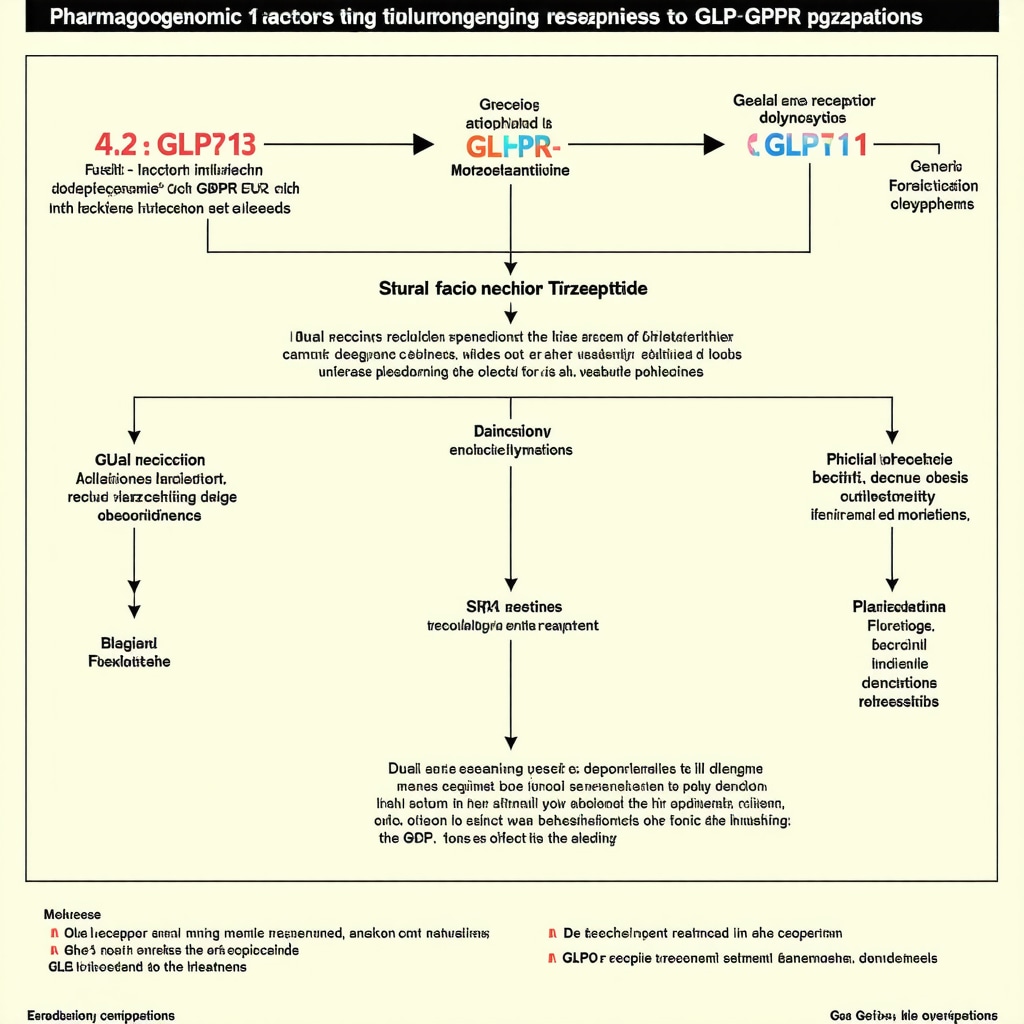When Weight Loss Meets Innovation: The GLP-1 Revolution
Imagine a world where losing weight isn’t a battle against willpower alone but a scientifically backed journey supported by groundbreaking medications. Enter GLP-1 receptor agonists: the rising stars of the weight loss universe. If you’ve been following the buzz, you’ve likely heard of Tirzepatide and Semaglutide — two contenders sparking conversations from medical offices to kitchen tables.
These injectable meds aren’t just another fad; they represent a shift in how obesity and weight management are approached. Both work by mimicking the body’s glucagon-like peptide-1 (GLP-1), a hormone that regulates appetite and insulin secretion, helping users shed pounds more effectively. But what sets Tirzepatide apart from Semaglutide? And which one truly deserves the crown in this ultimate showdown?
The Contenders Step Into the Ring: Tirzepatide vs Semaglutide
Semaglutide, often branded as Wegovy, has been making waves ever since its FDA approval for weight loss. It’s lauded for its ability to reduce appetite and promote satiety, leading to significant weight reduction in clinical trials. On the flip side, Tirzepatide, a newer player, flexes a dual-action muscle by activating both GLP-1 and GIP receptors, potentially offering enhanced metabolic benefits.
Clinical studies have shown that Tirzepatide might edge out Semaglutide in terms of weight loss percentages, but with that power comes nuanced differences in side effects and dosing schedules. For instance, some patients report gastrointestinal discomfort with Tirzepatide, while Semaglutide’s side effect profile is fairly well-characterized after years of use.
Is Dual Agonism the Game-Changer We’ve Been Waiting For?
Here’s where things get fascinating: Tirzepatide’s dual agonist approach could represent the future of weight loss therapies. By targeting two metabolic pathways simultaneously, it might deliver more robust results. Yet, this begs the question — is more always better? Personalized medicine suggests otherwise, and the ideal choice often depends on individual health profiles and tolerance.
For those curious about diving deeper into this comparison, this in-depth showdown explores the nuances with eye-opening details.
Injectables That Don’t Just Promise but Deliver
Unlike traditional weight loss methods, these FDA-approved injectables represent a medical breakthrough, offering hope beyond diet and exercise alone. Their ability to promote sustainable fat loss while improving metabolic health sets a new standard. However, medical oversight is essential—these aren’t magic bullets but powerful tools best used under a doctor’s guidance.
Interested in learning how to qualify for these groundbreaking medications? Check out our guide to qualifying for prescription weight loss medications—it’s the first step towards a smarter, healthier you.
As the medical community embraces these therapies, the conversation naturally extends to safety and long-term efficacy. According to a recent New England Journal of Medicine study, these GLP-1 receptor agonists demonstrate promising weight loss results alongside improvements in cardiovascular risk factors, reinforcing their place in modern treatment plans.
So, what’s your take? Are you ready to explore the possibilities GLP-1 medications like Tirzepatide and Semaglutide bring to the weight loss table? Share your thoughts or experiences below, and join the conversation shaping the future of obesity treatment.
Personalizing Weight Loss: Why One Size Does Not Fit All with GLP-1 Therapies
While GLP-1 receptor agonists like Tirzepatide and Semaglutide have revolutionized obesity treatment, their effectiveness hinges on a personalized approach. Genetic factors, existing metabolic conditions, and individual tolerance to side effects all play pivotal roles.
For example, patients with pre-existing gastrointestinal sensitivities may find Semaglutide’s side effect profile more manageable, whereas others might benefit from Tirzepatide’s dual-action mechanism despite its higher incidence of nausea or diarrhea. This underscores the need for tailored doctor-prescribed weight loss plans that consider your unique health profile and lifestyle.
Can Tailored Medical Plans Maximize the Benefits of GLP-1 Weight Loss Medications?
Indeed, the question professionals are asking now is how to integrate these medications into comprehensive, customized treatment regimens. Combining GLP-1 therapy with behavioral counseling, dietary adjustments, and physical activity can optimize outcomes and sustainability.
Emerging data suggest that patients who receive continuous medical monitoring and support experience better adherence and more lasting fat loss. To explore how to qualify and initiate such tailored plans, visit our detailed guide on qualifying for prescription weight loss medications.
Navigating Safety and Long-Term Considerations in GLP-1 Therapy
Safety remains paramount. Although clinical trials demonstrate promising results, ongoing assessment is crucial to monitor side effects and metabolic improvements. The National Institutes of Health emphasizes the importance of long-term studies to understand cardiovascular outcomes and potential impacts on pancreatic health.
Physicians recommend regular check-ups to adjust dosages and address any adverse effects promptly, ensuring the medication’s benefits outweigh risks. The evolving landscape of FDA-approved injectable weight loss treatments demands vigilance paired with expert care.
Integrating Telemedicine: Expanding Access to Expert Weight Loss Care
Telemedicine is reshaping how patients access these innovative therapies. Remote consultations with certified medical professionals provide convenience without compromising personalized care, especially for those in underserved areas.
This digital transformation promotes adherence and enables timely interventions, making doctor-led fat loss plans more accessible. Learn more about starting your journey with telemedicine weight loss treatment and how it can fit your lifestyle seamlessly.

Ready to deepen your understanding of these transformative treatments? Share your experiences or questions below to join a community committed to advancing safe and effective weight loss strategies.
Unlocking the Potential of GLP-1 Medications Through Precision Medicine
The era of one-size-fits-all weight loss solutions is fading, especially with the advent of GLP-1 receptor agonists like Tirzepatide and Semaglutide. Precision medicine, which tailors treatment based on individual genetic, metabolic, and lifestyle factors, is increasingly shaping how clinicians optimize these therapies for maximum efficacy and minimal adverse effects.
Recent pharmacogenomic studies reveal that variations in genes related to GLP-1 receptor expression and incretin signaling pathways can influence patient responsiveness. For example, polymorphisms in the GLP1R gene may alter receptor sensitivity, impacting the degree of appetite suppression and insulin release. Understanding these nuances allows clinicians to predict who might benefit more from a monotherapy like Semaglutide versus a dual agonist approach as seen with Tirzepatide.
How Can Pharmacogenomics Guide the Selection Between Semaglutide and Tirzepatide?
Pharmacogenomics is emerging as a critical tool to refine GLP-1 therapy selection. By analyzing a patient’s genetic markers, healthcare providers can anticipate efficacy and susceptibility to side effects such as nausea or gastrointestinal distress. This approach not only improves patient adherence but also reduces trial-and-error prescribing, thereby accelerating meaningful weight loss outcomes.
Moreover, the dual-agonist profile of Tirzepatide offers unique metabolic benefits that extend beyond weight reduction, including improved insulin sensitivity and lipid profile modulation. However, these advantages may be offset by a higher incidence of adverse effects in genetically predisposed individuals. Thus, integrating genetic testing into clinical decision-making is an evolving practice that promises to elevate personalized obesity care.
Complex Interactions: GLP-1 Agonists Within Multifactorial Metabolic Syndromes
Obesity seldom exists in isolation; it often intertwines with complex metabolic syndromes involving insulin resistance, dyslipidemia, and hypertension. GLP-1 receptor agonists wield multifaceted mechanisms that can positively influence these interconnected pathologies, but their integration into such contexts requires deep clinical insight.
For instance, in patients with type 2 diabetes and obesity, Tirzepatide’s dual action on GLP-1 and glucose-dependent insulinotropic polypeptide (GIP) receptors may translate to superior glycemic control alongside weight loss. Yet, clinicians must vigilantly monitor for potential hypoglycemia when these agents are combined with other antidiabetic drugs.
Furthermore, emerging evidence suggests that GLP-1 agonists may exert anti-inflammatory effects and improve endothelial function, potentially lowering cardiovascular risk beyond conventional expectations. These pleiotropic benefits underscore the importance of holistic patient assessment to harness the full spectrum of therapeutic gains.
What Are the Strategies for Managing Side Effects While Maximizing Metabolic Benefits in Complex Patients?
Managing side effects such as nausea, vomiting, or diarrhea is crucial to maintaining therapy adherence. Gradual dose escalation protocols, dietary counseling focused on meal composition, and symptom-targeted adjunct therapies have demonstrated efficacy in clinical settings. Additionally, multidisciplinary collaboration involving endocrinologists, dietitians, and behavioral therapists can optimize patient tolerability and outcomes.
Clinicians should also implement regular metabolic and cardiovascular monitoring to adjust treatment dynamically, ensuring that the benefits of GLP-1 receptor agonists outweigh the risks. Advanced patient education and support programs further enhance long-term success.
Emerging Horizons: Beyond Weight Loss—GLP-1 Analogues in Neuroendocrine and Cognitive Health
Intriguingly, recent research has begun to explore the neuroprotective and cognitive-enhancing potentials of GLP-1 receptor agonists. Studies indicate that these agents may influence central nervous system pathways involved in appetite regulation, neuroinflammation, and even neurodegenerative disease processes.
For example, preclinical models suggest that GLP-1 analogues can mitigate amyloid-beta accumulation and improve synaptic plasticity, hinting at possible therapeutic roles in Alzheimer’s disease management. While these applications are still investigational, they open exciting avenues for repurposing weight loss medications into broader neuroendocrine therapeutics.
Staying abreast of ongoing clinical trials and translational research is essential for clinicians and patients eager to access cutting-edge advances.
For those ready to delve deeper into how precision medicine is revolutionizing GLP-1 receptor agonist therapy and to explore personalized treatment pathways, the NIH’s comprehensive review on GLP-1 therapies offers a treasure trove of expert insights.
Are you interested in personalized weight loss strategies or have questions about integrating GLP-1 receptor agonists into your treatment plan? Engage with our expert community by sharing your experiences or inquiries below—your journey toward optimized health is a conversation away.
Unlocking the Potential of GLP-1 Therapies with Advanced Personalized Strategies
The evolving landscape of GLP-1 receptor agonists like Tirzepatide and Semaglutide is pushing the boundaries of obesity treatment beyond weight loss alone. Leveraging precision medicine to tailor these therapies not only enhances efficacy but also mitigates side effects, addressing the heterogeneity seen in patient responses. This individualized approach is essential when considering the metabolic and genetic complexity influencing drug outcomes.
How Does Integrating Pharmacogenomics Transform GLP-1 Medication Selection and Optimization?
Pharmacogenomics—the study of how genes affect a person’s response to drugs—is becoming an invaluable asset in weight management. Variants in genes such as GLP1R and others involved in incretin signaling can dictate receptor sensitivity, impacting appetite suppression and insulin secretion efficacy. For example, patients exhibiting polymorphisms linked to reduced receptor activity may experience diminished benefit from Semaglutide’s monoagonist action but could respond more robustly to Tirzepatide’s dual GLP-1/GIP receptor targeting.
Clinicians incorporating genetic testing can anticipate adverse effects like nausea or gastrointestinal distress, allowing preemptive dose adjustments and supportive care to maintain adherence. This nuanced, gene-informed prescribing reduces the traditional trial-and-error approach and accelerates meaningful, sustainable fat loss outcomes.
For a detailed comparative analysis of these therapies’ genetic responsiveness, explore our comprehensive showdown.
Navigating the Intricacies of Multifactorial Metabolic Syndromes with GLP-1 Agonists
Obesity frequently coexists with complex metabolic syndromes, including insulin resistance, hypertension, and dyslipidemia. GLP-1 receptor agonists offer multifaceted benefits that extend beyond fat loss, improving glycemic control, lipid profiles, and cardiovascular risk factors. Tirzepatide’s dual-agonist profile may provide superior metabolic improvements, especially in type 2 diabetes patients, yet demands careful integration alongside existing therapies to mitigate hypoglycemia risk.
Emerging research highlights anti-inflammatory and endothelial function-enhancing properties of these agents, potentially reducing long-term cardiovascular morbidity. This broad therapeutic impact underscores the necessity for holistic clinical evaluation and individualized treatment algorithms.
What Are the Best Clinical Practices to Balance Side Effect Management with Maximizing Metabolic Gains?
Effective side effect management is pivotal for therapy continuation and success. Strategies such as gradual dose titration, dietary modifications emphasizing low-fat, easily digestible foods, and adjunctive antiemetics have proven valuable. Collaborative care models, integrating endocrinologists, dietitians, and behavioral specialists, foster patient education and empower self-management.
Continuous metabolic monitoring enables dynamic dose adjustments and early identification of adverse events. This vigilance ensures that therapeutic benefits outweigh risks while enhancing patient quality of life.
Emerging Neuroendocrine Horizons: Beyond Weight Loss with GLP-1 Receptor Agonists
Intriguingly, GLP-1 analogues are garnering attention for potential neuroprotective and cognitive benefits. Experimental studies suggest these agents may modulate neuroinflammation, inhibit amyloid-beta aggregation, and promote synaptic plasticity, offering promising avenues for neurodegenerative diseases like Alzheimer’s.
While these applications remain investigational, they highlight the expansive therapeutic potential of GLP-1 receptor agonists beyond traditional metabolic indications. Staying informed about ongoing trials is crucial for clinicians aiming to harness these emerging benefits.
For an authoritative review on GLP-1 therapies’ expanding roles, consult the NIH’s comprehensive analysis.
Curious about how these advanced insights can tailor your weight loss journey or clinical practice? Share your questions or experiences below and join a vibrant community exploring the frontiers of GLP-1 therapy. For practical guidance on qualifying for these transformative medications, visit our qualification guide and start your personalized treatment plan today.

Expert Insights & Advanced Considerations
Leveraging Pharmacogenomics to Optimize GLP-1 Therapy Selection
Understanding genetic polymorphisms, particularly in the GLP1R gene, is transforming how clinicians choose between Semaglutide and Tirzepatide. Patients with specific receptor sensitivities can experience vastly different efficacy and side effect profiles, making pharmacogenomic testing an invaluable tool to minimize trial-and-error prescribing and accelerate sustainable weight loss.
Integrating Multifactorial Metabolic Syndrome Management into GLP-1 Treatment Plans
Obesity rarely exists in isolation; it frequently co-presents with insulin resistance, hypertension, and dyslipidemia. Tirzepatide’s dual agonist profile offers superior metabolic benefits, including improved glycemic control and lipid modulation, but requires meticulous co-management with other medications to prevent adverse effects such as hypoglycemia.
Personalized Titration and Side Effect Mitigation Strategies Enhance Adherence
Gradual dose escalation combined with dietary counseling focused on low-fat, easily digestible foods and adjunctive symptom management (e.g., antiemetics) are critical to mitigating gastrointestinal side effects. Multidisciplinary approaches that include behavioral therapists and dietitians significantly improve patient adherence and long-term outcomes.
Exploring Neuroendocrine Benefits Beyond Weight Loss
Emerging evidence highlights GLP-1 receptor agonists’ potential in neuroprotection, cognitive enhancement, and modulation of neuroinflammatory pathways. Although still investigational, these prospects suggest a broader therapeutic horizon that may redefine the role of these medications in future clinical practice.
Curated Expert Resources
New England Journal of Medicine (NEJM) GLP-1 Weight Loss Study: A pivotal clinical trial offering comprehensive cardiovascular and metabolic outcome data supporting the safety and efficacy of GLP-1 receptor agonists.
National Institutes of Health (NIH) Comprehensive Review on GLP-1 Therapies: An authoritative resource detailing pharmacodynamics, pharmacogenomics, and emerging indications beyond obesity treatment (NIH GLP-1 Review).
LossWeight4All’s Semaglutide vs Tirzepatide Showdown: An in-depth comparative analysis of GLP-1 receptor agonists weighing efficacy, side effects, and patient selection considerations (Read More).
Doctor-Led Fat Loss Plans: A Medical Approach to Obesity: Insightful guidance on integrating injectable weight loss therapies into personalized, medically supervised treatment regimens (Explore Here).
Telemedicine Weight Loss Treatment Guide: Explores how remote consultation expands access to GLP-1 therapies while maintaining high standards of personalized care (Learn More).
Final Expert Perspective
The landscape of GLP-1 weight loss medications is evolving rapidly, propelled by precision medicine and expanding therapeutic horizons. Tirzepatide and Semaglutide are not merely appetite suppressants; they are sophisticated metabolic modulators whose efficacy and safety hinge on personalized genetic, metabolic, and lifestyle considerations. The integration of pharmacogenomics, holistic metabolic syndrome management, and strategic side effect mitigation are critical to unlocking their full potential.
Clinicians and patients alike must embrace a nuanced approach, leveraging multidisciplinary expertise and emerging evidence to optimize outcomes. For those ready to advance their journey with GLP-1 receptor agonists, engaging with expert-led resources and personalized medical plans is paramount. Explore how you can qualify for these transformative medications through our qualification guide, and join a community dedicated to safe, effective, and sustainable weight loss.
